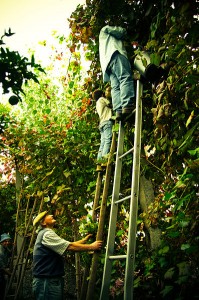Portugal cultivates new wine identity
 Once known only for its Port and notorious Mateus Rose production, today Portugal is changing its image with its own signature grapes. Portugal’s bottled wine exports to the United States topped the 1 million-case mark last year, an increase of more than 30 percent in recent years.
Once known only for its Port and notorious Mateus Rose production, today Portugal is changing its image with its own signature grapes. Portugal’s bottled wine exports to the United States topped the 1 million-case mark last year, an increase of more than 30 percent in recent years.
While many winemakers around the world focused on planting international varietals of cabernet sauvignon, merlot and chardonnay, Portugal stayed true to its roots. Literally. It’s betting its traditional wine making reputation on the powerful indigenous Touriga Nacional and refreshing, distinctive Vinho Verde.
The Touriga Nacional is considered the finest nonsparkling red wine of the Dao and Douro regions, with very little planted outside of Portugal. It’s one of the lead grapes in the blending of Port wine. In the past these wines were made in very concentrated, high-alcohol styles (very similar to a concentrated full-bodied Australian Shiraz). Today many winemakers are moving in the opposite direction with lighter, lower alcohol content, less extraction and more acidity from grapes being grown at higher altitudes.
Because the Touriga Nacional was regarded as only a blending partner for Port, varietal plantings of this grape are relatively new by vine standards. Most vineyards have small plantings and vines as young as 8 to 10 years. Because of the scarcity of old vines, we are still about 10 years away from experiencing the full potential of this indigenous grape.
Vinho Verde is Portugal’s fresh, lively, zingy, zesty and above all bargain-priced wine. These wines are traditionally made from an unfamiliar listing of local grapes like azal, loureiro, arinto and trajadura. Vinho Verde is the largest of the regulated wine regions, stretching from the Spanish border to south of Oporto on the Atlantic coast.
Over the past few years some winemakers are adding albarinho (more familiar to Americans by its Spanish name, albarino) to the mix. With growing familiarity of this wine, more and more consumers are passing over the known white varietals on the retail shelf for Vinho Verde’s refreshing taste and price.
THE VALUE
- 2011 Broadbent Vinho Verde, Portugal (about $9 retail)
THE SPLURGE
- 2010 Cape Roca Fisherman Red (Touriga Nacional blend), Portugal (about $15 retail)